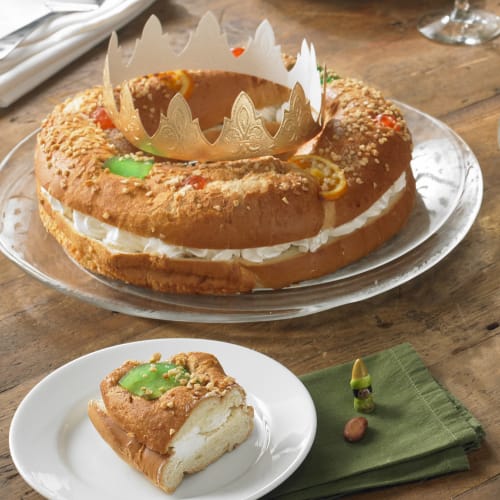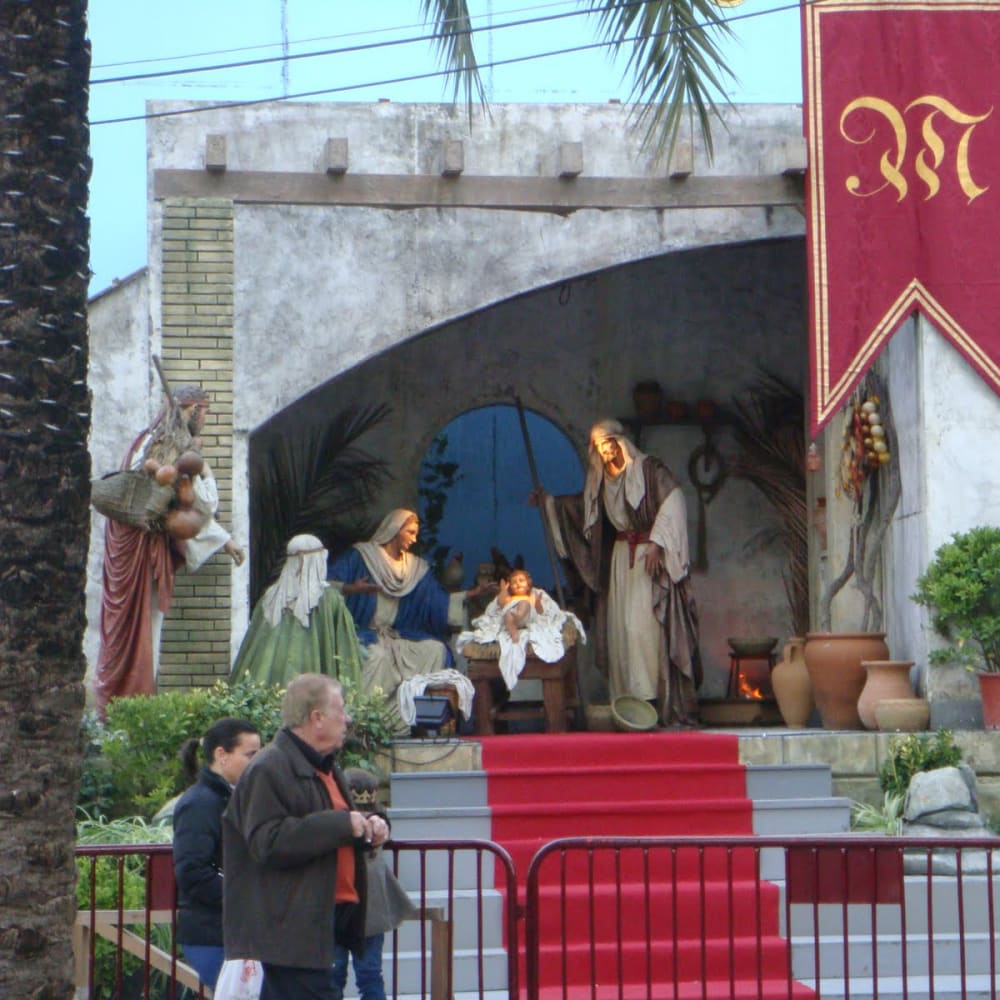Three Kings Day in Spain
Don Harris | January 2016




I want to share with you a favorite essay of mine from a few years back, describing one of the most delightful celebrations in Spain, El Día de los Reyes Magos, or Three Kings Day. It is all about the joy of children as they join the whole community to celebrate the coming of the Magi. Next year you may want to bring this tradition to your home!
Happy New Year! Every January 5th, thousands of excited children and their parents gather along streets of Spain to greet the arrival of the Three Kings. In the evening, the three kings process through the towns on horseback, camels or even on flat bed trucks pulled by tractors! The Wise Men - one of whom is traditionally a Moor - scatter candy into the excited crowd of children. In a few towns, they may include small gifts as well.

After the parade, before the children are tucked in bed, they leave three items at the door: a dish of water and hay for the camels; turrón and perhaps a glass of wine or sherry for the Kings; and a pair of shoes in which they hope the Wise Men will leave gifts.
The next morning the children will discover their gifts, and for breakfast, many will enjoy a piece of Roscón de Reyes - a sweet bread covered with candied fruit. Within it is hidden a prize, usually a small coin or a ring. Whoever finds it is King for the Day. After dinner late in the afternoon, the family will visit the homes of members of their extended family - grandparents, aunts and uncles or a favorite cousin to see what the Kings had left them. It is an all-day evolution.
Ruth and I find that this time right after Christmas is a nice time to visit Spain. Leaving the throbbing marketplace of America and walking the cobblestone streets of Spain's delightful traditional towns is balm for the soul. Christmas festivities in Spain span almost two weeks: Christmas Day is but the beginning of twelve days of family celebrations that climax with the arrival in Bethlehem of the Three Kings on January 6th.
We find that dropping in on local celebrations of Three Kings Day is particularly appealing. Three celebrations were particularly memorable: Guadalupe, Santiago de Compostela and Trujillo.
The village surrounding the Monastery of Guadalupe is nestled deep in the mountains of the same name. The town was a particular favorite of Ferdinand and Isabella - in fact it was there that they received Columbus when he returned from his first voyage bringing many exotic new foods such as peppers, tomatoes and chocolate.
The year that we visited Guadalupe the weather was a little raw: the wind and mist were blowing in from the mountains. Nevertheless, the weather did not dampen the spirit of the townspeople. From the steps under the 14thC Mudejar facade of the monastery, the mayor read the names of all of the children who had been born into their community during the previous year. As each child's name was announced, the parents brought their baby forward up the steps where the infant was blessed by the priest and given a little gift from the town.

Then from the distance, we could hear the rhythm of drums that the local young men were beating heralding the arrival of the Three Kings. Down a side street they came on flat-beds pulled by John Deere tractors and slowly wended their way into the Plaza Mayor. For us adult literalists a tractor has little resemblance to a camel or a horse, but that did not faze the delighted children as they scrambled for the candy, which was liberally sown.
Another year we were in one of our favorite places, the pilgrimage town of Santiago de Compostela, along with two of our sons, Jonathan and Christopher. I remember the four of us heading for the Three Kings parade. It was dusk and we were walking in the mist across the Plaza de Obraidoiro. From the direction of the cathedral on our left, which was shrouded with fog, I could hear the haunting notes of a jazz saxophone played by a young pilgrim whose figure I could barely make out in the archway.
The ancient stone arcades of the pilgrimage town were alive with hundreds of excited children crowding the curbs to get a better look at the Magi, who, this time were riding horses. The tractors were there too, groaning with more wrapped candies than I had ever seen in one place! So much life! So much joy! To think that children have been crowding these curbs for centuries!
Our favorite Tres Reyes celebration of all took place in the jewel of a village named Trujillo, in Extremadura, western Spain. It has been such a quiet town for so long, that the Trujillo brothers left for the New World hundreds of years ago in search of excitement and adventure.
The brothers eventually conquered Peru, and there is a notable bronze statue of Francisco Pizarro commemorating this event in the in the beautiful Plaza Mayor. The cobble-stoned area is vast - big enough to hold a gathering of the entire village, which is exactly what happens each year when the town gathers to await the arrival of the Tres Reyes.

When we arrived in Trujillo on the evening of the procession, we visited a living creche located in one corner of the Plaza: A twelve-year-old boy sporting a cotton batten beard represented St Joseph. At his side was Mary, a lovely ten-year-old girl, who was bending over the manger tending a plaster Christ Child. Some of the other boys surrounded the manger, clad in shepherd bathrobes. Intermingled were their suitably angelic little sisters who completed the tableau. It was so disarming - and refreshing.
A clatter of hoofs echoing off the cobblestones indicated the pending arrival of the Three Kings -- three young fathers riding horses from their farms. Literally, the whole village had gathered in the plaza to greet them: young parents with babes in arms, grandmothers peering proudly into baby carriages delivering a couple of caramelos (hard candies) to their delighted grandchildren; and lots of excited kids circling about the plaza. Eventually they migrated to the side street where the Three Kings had settled to greet the children personally and to give them presents.
What made these three occasions so memorable? Was it because there was no commercial agenda, and its execution was amateur? That is part of it. Was it because the neighbors get together to put on something for the children of their town? That too. Most of all what is memorable is the unbridled joy of little children.
I hope you experienced such joy during the holidays. Certainly we did with our two 3-year old grandchildren exhibiting such unabashed pleasure as they unwrapped even the most insignificant (to us) present. Or our 5 year old grandson, so excited about his foos-ball table. What a respite from the world-weary world in which we live.
Tu amigo,
Don

